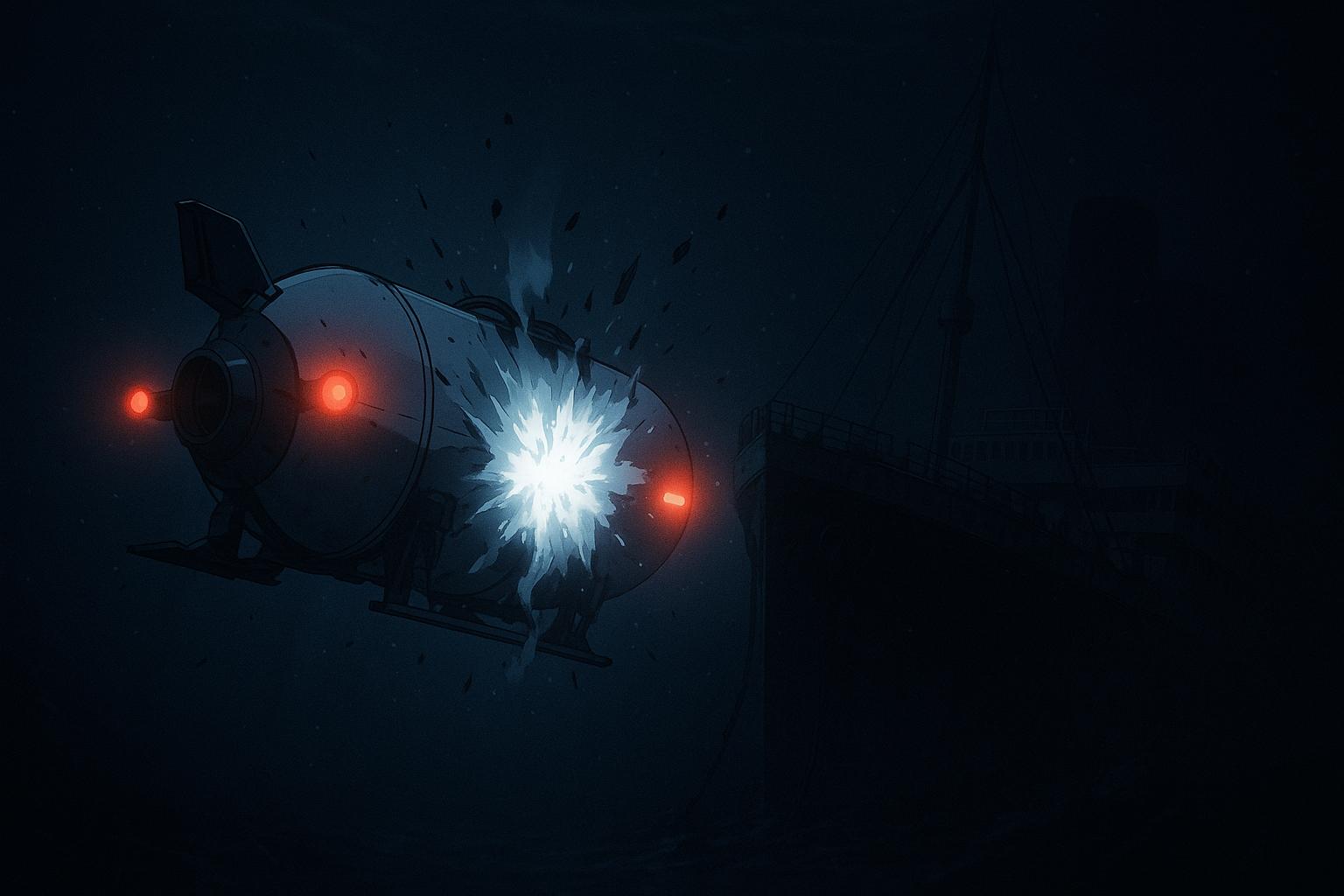Dramatic new footage has emerged from a test dive of the Titan submersible, which tragically imploded during a dive to the Titanic wreck in June 2023, claiming the lives of five individuals including prominent adventurer Hamish Harding and the father-son duo Shahzada and Suleman Dawood. The chief executive of OceanGate Expeditions, Stockton Rush, and renowned French deep-sea expert Paul-Henri Nargeolet were also among the deceased.
The harrowing footage is featured in a forthcoming documentary entitled "Implosion: The Titanic Sub Disaster," set to air on BBC Two. This gripping narrative reveals that the Titan's fateful test in April 2019 malfunctioned in alarming fashion, with crew members reporting a noise comparable to a gunshot emanating from the submersible's hull. During the dive, which marked one of the initial assessments of Titan's innovative carbon fibre structure, the lights on the exterior abruptly extinguished, and a battery failure compromised the sub’s vertical thrust.
Karl Stanley, a submersibles expert who was on board that day, recounted how they were perilously close to catastrophic failure, stating, “I did not even come close to appreciating the real danger.” Given that the Titan was designed for profound dives—its first such expedition following a series of shallow tests—the experience raised immediate alarm bells among the crew. The depth reached during that dive was perilously close to that of the Titanic wreck itself, with Stanley noting that they were "within a few percentage points of implosion."
These revelations resonate strongly with testimony presented during a recent U.S. Coast Guard investigatory panel, which scrutinised OceanGate's operations. Many witnesses highlighted a troubling culture of profit over safety, suggesting that management often sidelined serious concerns regarding the Titan's structural integrity and the choice of materials in its construction. The use of carbon fibre, while innovative, drew specific scrutiny, with experts warning of its susceptibility to fatigue failure. Concerns were amplified when it was revealed that other missions had experienced significant disruptions, including a thruster malfunction during a 2021 dive.
As the Titan's final voyage approached, communication with the submersible was abruptly lost approximately one hour and 45 minutes into its descent. What followed was a massive search and rescue operation, which captivated the public's imagination and garnered international news coverage. Debris from the wreckage, identified near the Titanic's location, indicated a catastrophic loss of the pressure chamber. The U.S. Navy had detected potential implosion signals shortly after the Titan’s last transmission, underscoring the tragedy's unfolding from the very early moments of the doomed expedition.
In an emotional segment captured on film, Wendy Rush, Stockton’s wife, is seen attempting to contact the crew as she monitored their descent from a support vessel. Her reaction to a sudden noise—initially dismissed as a minor incident—was later contextualised as potentially linked to the moment the Titan imploded. Investigators have surmised that the timing of messages indicating operational normality may have been delayed by the sound of the catastrophic failure.
Looking back on the harrowing events, many questions remain unanswered. OceanGate has since ceased operations amid ongoing investigations into the terrible accident, which serve as a sobering reminder of the inherent dangers associated with deep-sea exploration. As the deep-sea exploration community continues to grapple with the implications of this disaster, there is a renewed emphasis on adhering to stringent safety standards and rigorous testing protocols.
The deep-sea expedition landscape is further complicated by contrasting perceptions of risk and reward, as articulated during the investigatory hearings. While many view the drive for exploration as a noble pursuit, there is a clear and present danger that must be acknowledged and addressed—both for those who dare to explore the depths of the ocean and for the companies that facilitate these adventures.
As the documentary airs, it will delve into the emotional narratives surrounding the victims and the ongoing quest to understand how such a tragedy could occur, inviting the public to reflect on not only the allure of exploration but also the essential importance of accountability in technological endeavours designed to push the boundaries of human experience.
Reference Map:
- Paragraph 1 – [1], [5]
- Paragraph 2 – [1], [3], [2]
- Paragraph 3 – [1], [4], [6]
- Paragraph 4 – [2], [3]
- Paragraph 5 – [5], [6]
- Paragraph 6 – [1], [3]
Source: Noah Wire Services
